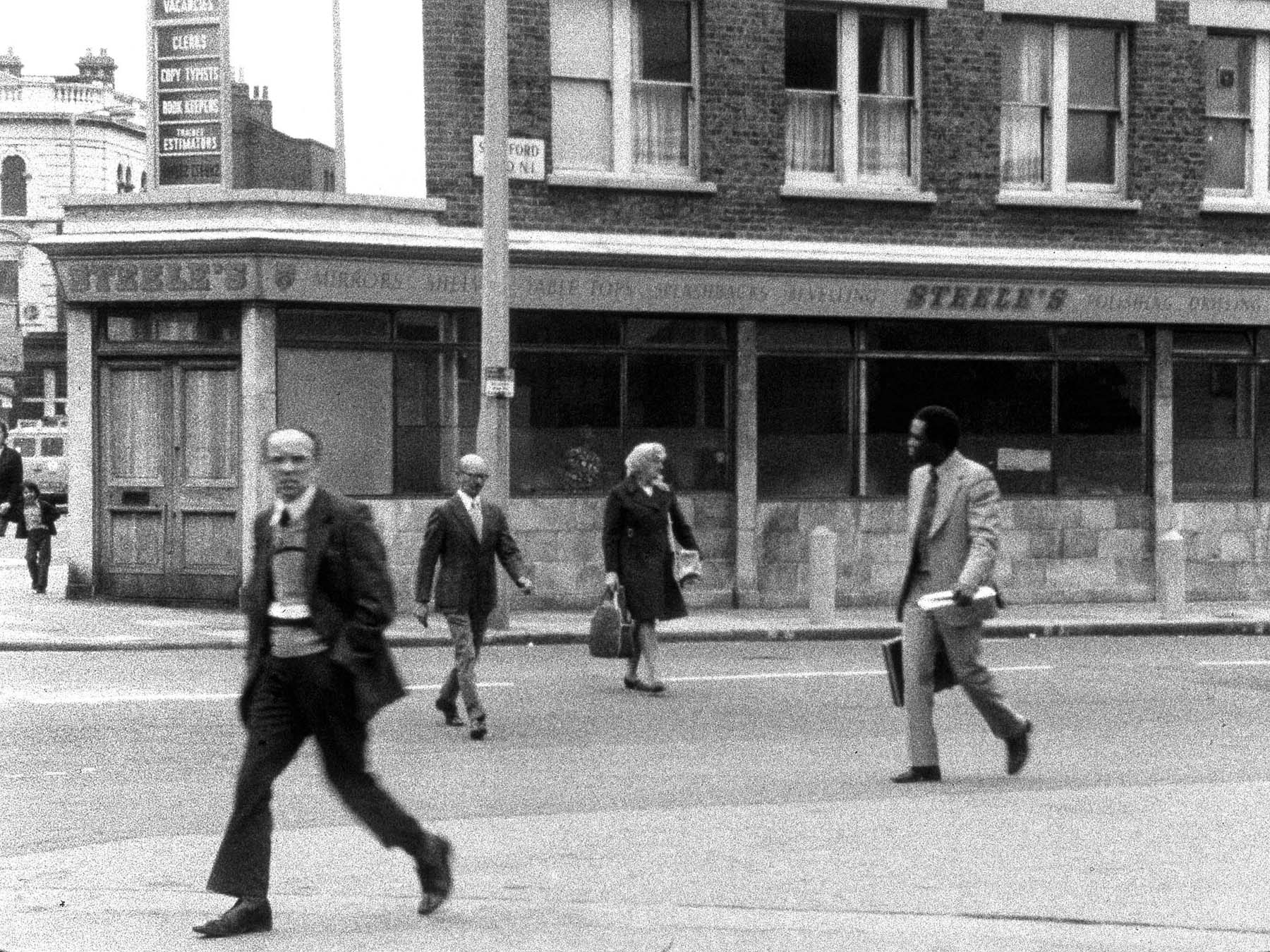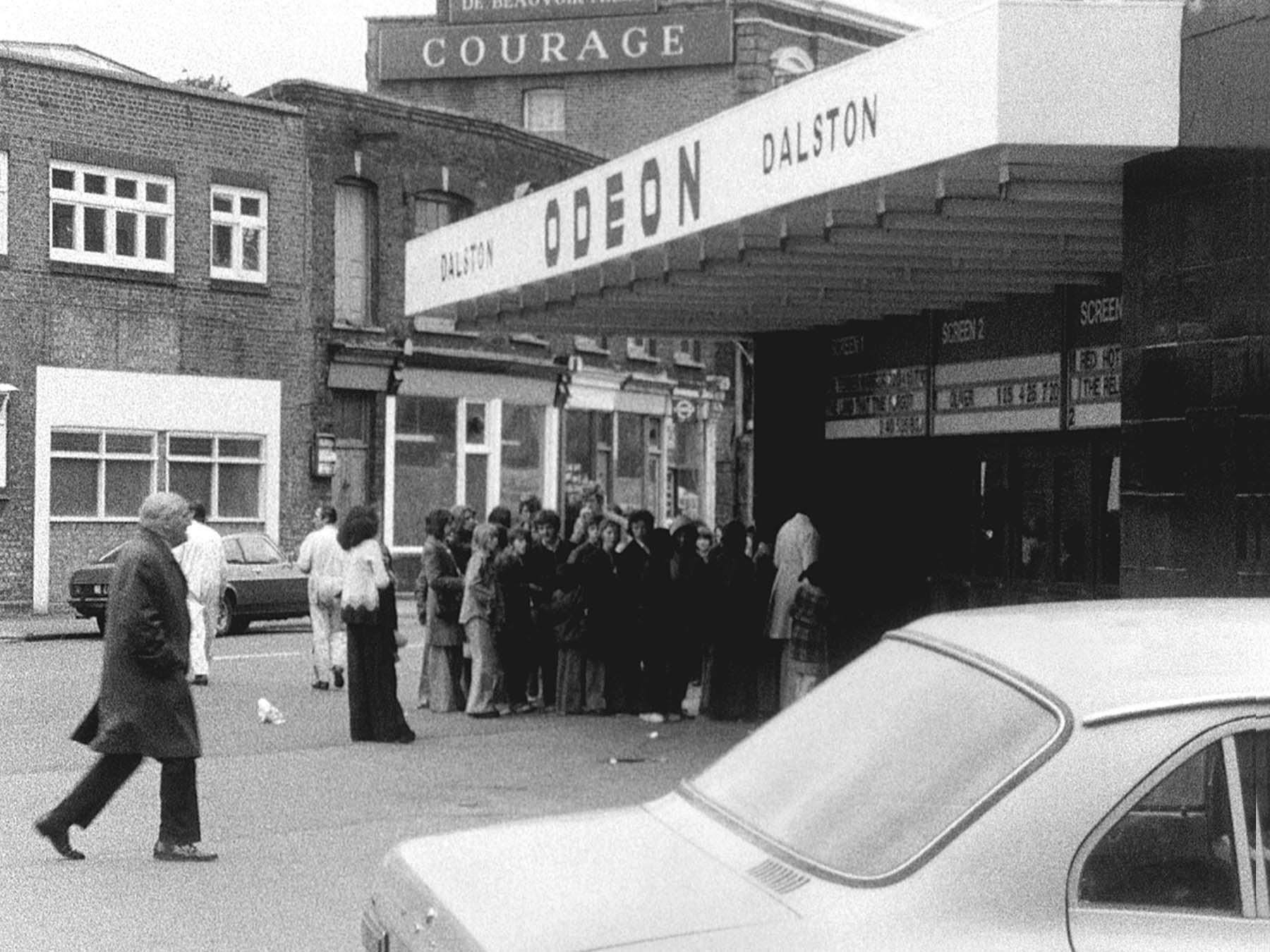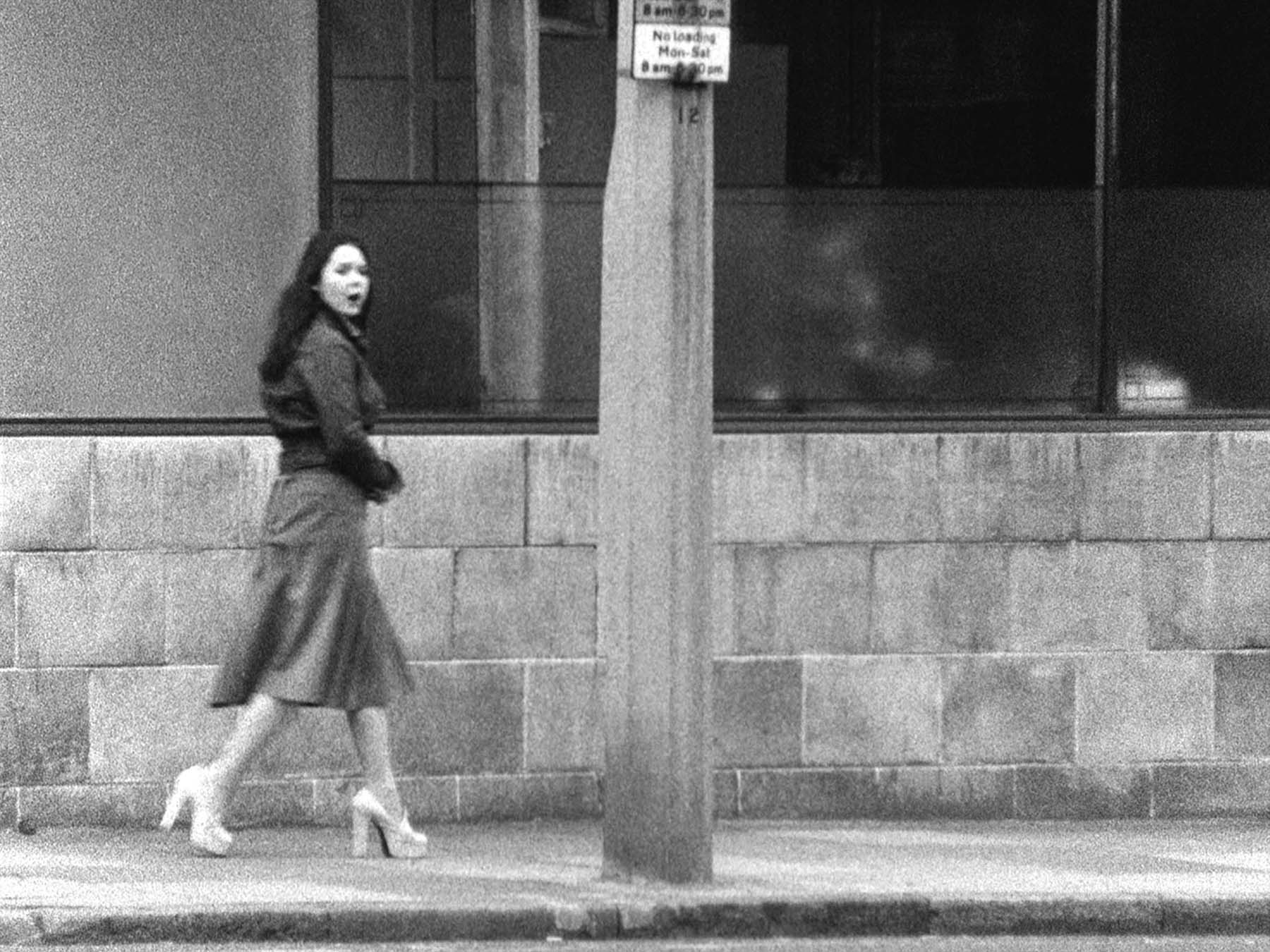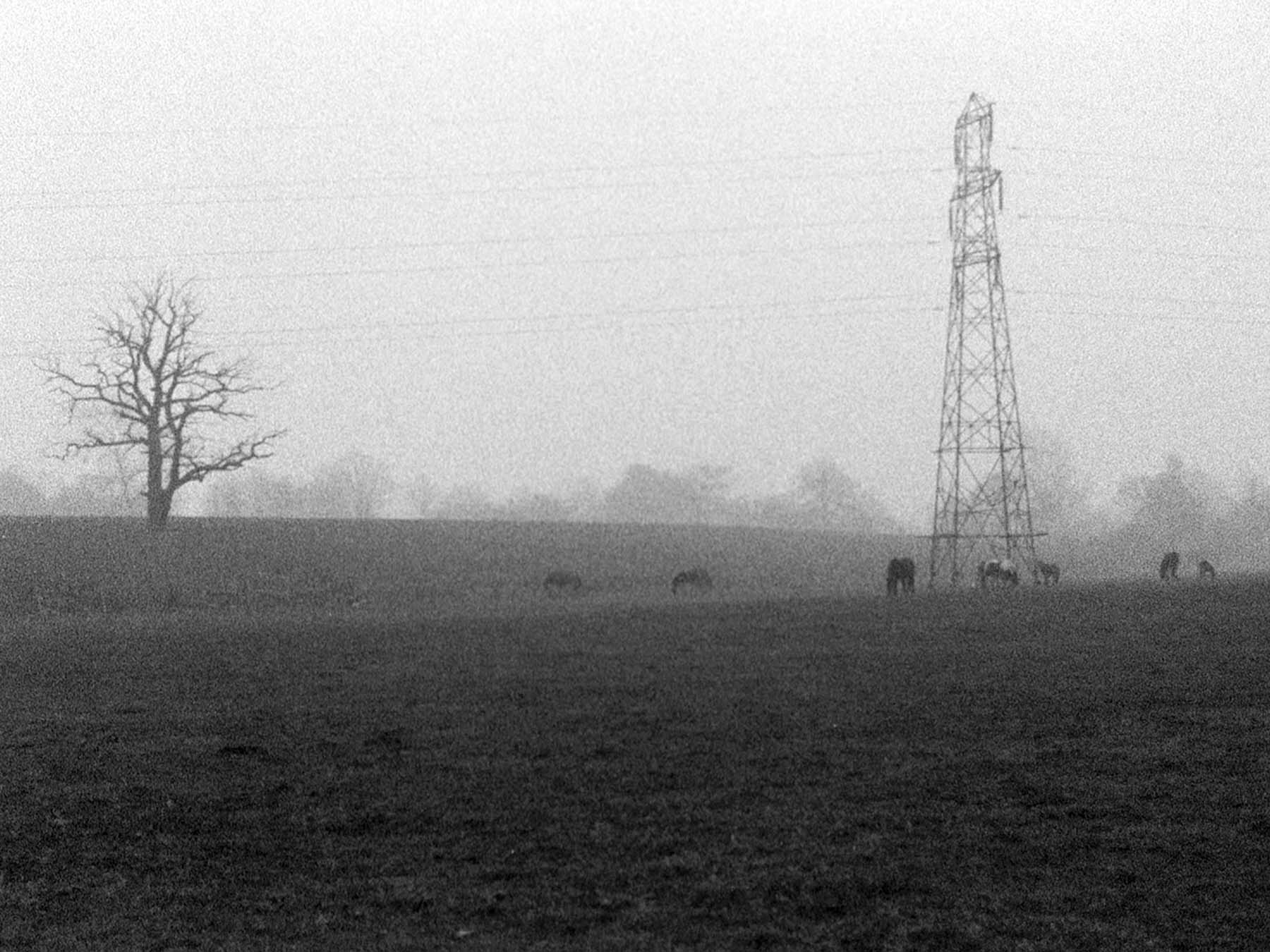“I am writing this with a black ‘Tempo’ fibre-tip pen. A few months ago, I bought fifteen of these pens for sixty pence. Unfortunately, because they are so common, other people pick them up, thinking they are theirs. I bought the pens from a market in Kingsland Road in Hackney, about a hundred yards from where the film was shot. The film draws attention to the cinematic codes and illusions it incorporates by denying their existence, treating representation as absolute reality.” John Smith, 1976.
“In The Girl Chewing Gum a commanding voice over appears to direct the action in a busy London street. As the instructions become more absurd and fantasised, we realise that the supposed director (not the shot) is fictional; he only describes – not prescribes – the events that take place before him. Smith embraced the ‘spectre of narrative’ (suppressed by structural film), to play word against picture and chance against order. Sharp and direct, the film anticipates the more elaborate scenarios to come; witty, many-layered, punning, but also seriously and poetically haunted by drama’s ineradicable ghost.” A.L. Rees, A Directory of British Film & Video Artists, 1995
“The Girl Chewing Gum was made during a rich period of avant-garde practice in which many filmmakers, both in Britain and beyond, sought to dismantle the illusionist transparency of dominant cinema. Most of those invested in this project took up a focus on filmic materiality, refusing the possibility of a ‘window on the world’ in favour of a modernist concern with the cinematic apparatus. In The Girl Chewing Gum, Smith proceeded somewhat differently: his interest lay above all in interrogating the conventions that structured cinematic signification through a reflexive deployment of those very same conventions, rather than any out-and-out negation of them. The Girl Chewing Gum offers a playful yet trenchant exploration of the role that language – and particularly voiceover – plays in the production of filmic meaning and asserts the absolute impossibility of immediacy and neutrality. But despite its anti-illusionist criticality, the film remains deeply engaged with narrative and humour, two terms not often associated with British avant-garde cinema of the 1970s.” Erika Balsom, ‘In Focus: The Girl Chewing Gum’, Tate Research Publication, 2015
“In relinquishing the more subtle use of voice-over in television documentary, the film draws attention to the control and directional function of that practice: imposing, judging, creating an imaginary scene from a visual trace. This ‘Big Brother’ is not only looking at you but ordering you about as the viewer’s identification shifts from the people in the street to the camera eye overlooking the scene. The resultant voyeurism takes on an uncanny aspect as the blandness of the scene (shot in black and white on a grey day in Hackney) contrasts with the near ‘magical’ control identified with the voice. The most surprising effect is the ease with which representation and description turn into phantasm through the determining power of language.” Michael Maziere, Undercut magazine, 1984
“As the unbroken shot continues for the length of a single reel of film, the voiceover becomes increasingly fantastical in its demands and detail. The voice commands both space and time to move on its whim, seeing things invisible to the camera’s eye and gleaning information about people’s internal lives. The film may primarily lampoon cinematic conventions – the ego of the auteur, the ‘reality’ of documentary imagery – but it readily applies to similar social, cultural and political norms of the modern world. The Girl Chewing Gum can be plugged directly into contemporary concerns about the wielding of power, fake news, exploitable audiences and constructed narratives designed to cement a sense of dominion, or to lubricate acquiescence or unthinking consumption. That Smith achieves this in a remarkably funny and enjoyable 11 minutes makes it a perfect inoculation against a number of maladies afflicting today’s industrial and political leaders.” Ben Nicholson, Little White Lies magazine, 2018
“Alternately acting like a Gregory Crewdson style directorial photographer, a choreographer, a traffic cop, a scholar analyzing the random actions or attributes of anonymous pedestrians or an increasingly bizarre interpreter of the visible (or invisible) evidence (which at the end includes descriptions of a black bird with a nine foot wing span and a man with a helicopter in his pocket), the narrator is constantly intervening in what we see and hear, embellishing documentary records in ways that sometimes establish and more often stretch credibility. The girl chewing gum is elevated to significant iconography in this context; English words when read backward transform into Greek ones, and disembodied pronouncements fly (through electrical lines, of course) between the city and a field with cows 20 kilometers away. This film is the best antidote I’ve ever seen to the pretentious certitude of aesthetic interpretation and academic analysis. Susan Sontag, eat your heart out: I want every student I teach to see John Smith’s master work at least twice before picking up a camera or an art history textbook.” Shelley Rice, Jeu de Paume magazine, 2012
“Smith takes the piss out of mainstream auteurist ego, but provides proof of the underground ethos: Even with meagre mechanical means, the artist can command the universe.” Ed Halter, Village Voice, 2003
“John Smith’s improbable treatise on representation has deservedly become a Co-op classic.” Ian Christie, Time Out, 1980




